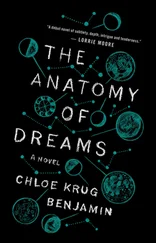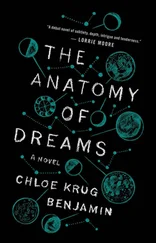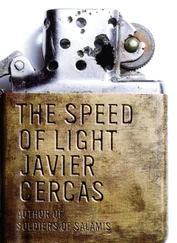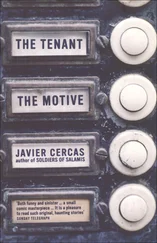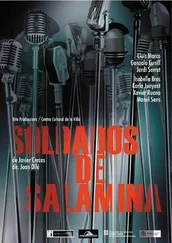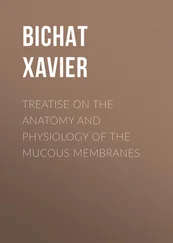I have kept the principal plotter out of sight: the Army. The 23 February coup was a military coup against Adolfo Suárez and against democracy, but who was plotting in the Army during the autumn and winter of 1980? And with what aim were they plotting? Were the intelligence services, then part of the Army, also plotting? Was CESID, which was the organization that grouped together most of the intelligence services? And, if they were, were they plotting to get Adolfo Suárez out of power or were they plotting in favour of a coup? Did CESID participate in the 23 February coup? This last is one of the most controversial points about the coup and, for obvious reasons, undoubtedly the one that’s aroused the greatest number of speculations: exploring it also allows for exploration of the golpista manoeuvres that were being hatched within the Army during the months before the coup.
The trial of those involved on 23 February charged only two members of CESID: Major José Luis Cortina, head of AOME, the centre’s special operations unit, and Captain Vicente Gómez Iglesias, Cortina’s subordinate. The major was acquitted; the captain was found guilty: the legal truth of the 23 February coup therefore states that CESID as an institution did not participate in the coup, only one of its members did so and on his own initiative. Is the legal truth the actual truth? Naturally, those then responsible for the intelligence services — its commander, Marine Corps Colonel Narciso Carreras, and its director and strong man, Lieutenant Colonel Javier Calderón — have always denied not only that CESID participated in the coup, but having had the slightest hint that it was brewing, which in any case is as good as a recognition of a resounding failure, because one of the fundamental missions the government had assigned to the intelligence services — if not the fundamental mission — was to warn of the eventuality of a coup. Are Carreras and Calderón telling the truth? Did CESID really fail on 23 February? Or, on the contrary, did it not fail and did it know about the preparations under way for the coup and nevertheless not warn the government, because it was implicated in the rebellion? Two facts seem unquestionable from the outset: one is that, even supposing it didn’t know in advance the exact details of the coup — the who, the when, the how and the where — CESID had reliable news of a plot against Adolfo Suárez and of the military conspiracies that in one way or another would eventually culminate in the events of 23 February; the other is that it informed the government. This at least is what emerges from a report habitually attributed to CESID, dated November 1980 and titled ‘Panorama of Operations Under Way’, a report that according to a version accepted by those who years later have published it in various books was sent to the King, Adolfo Suárez, General Gutiérrez Mellado and the Minister of Defence, Agustín Rodríguez Sahagún.
It is perhaps the most useful document we have to understand the immediate background to the coup, because it contains a contemporary, detailed and largely true description of the political and military plots of the day and a quite exact announcement of what would happen on 23 February. The report is divided into a prologue and three parts; each of the parts examines a type of operation: the first examines the civilian operations; the second, the military operations; the third, a mixed civilian-military operation. The prologue just sets out an obvious fact and a caution: the obvious fact is that the common denominator of the operations set out in the report is the desire to overthrow Adolfo Suárez to end ‘the climate of anarchy and the current socio-political chaos’; the caution pointed out that, given the current anarchy and chaos, ‘there is no reason whatsoever to expect there are not more operations under way’, and rather ‘we fear that these could be almost infinite’. The first part of the report describes four civilian operations, that is four political operations, three of them formulated within the Prime Minister’s party and the fourth within the Socialist Party: the report minimizes the viability of the first ones, but stresses the interest of each one of their organizers — Christian Democrats, Liberals and UCD Blues — in the civilian-military operation; it grants much more importance to the Socialist operation. This would be put into practice in the months of January or February 1981 and would consist of the tabling of a motion of no confidence by the PSOE, after making a pact with a large dissident UCD group, as the result of which Suárez would be removed from power and a government of national unity would be formed under the leadership of a military officer of liberal disposition and in the Crown’s good books, which would neutralize the Army’s golpista temptations and, supposing that its proponents could count on a suitable and willing officer with the King’s approval, provide the project with ‘almost total credibility’. The profile of the suitable and willing officer was the profile of General Armada or the profile generally assumed by General Armada, who, as the author of the report undoubtedly knew, had just met with Socialist leaders in Lérida. In this section note is also taken of the PSOE’s interest in the civilian-military operation set out at the end, and which is no more than a variation of the Socialist operation.
The second part of the report examines three military operations: that of the lieutenant generals, that of the colonels and that of a group it calls ‘the impromptus’. Here the author’s information is especially copious and reliable. According to him, the three operations are autonomous although not lacking points of connection and at any moment could unite; furthermore all three are highly viable and dangerous. The lieutenant generals’ operation, whose civilian point of reference is Manuel Fraga, would consist of a collective pronouncement by the Captaincy Generals — the centres of the Army’s power in each of the military regions the country had been divided into — which, similar to what had happened two months before in Turkey, would grant the coup an institutional tone or appearance; the report omits the names of the lieutenant generals involved in the operation (and among them the most conspicuous: Jaime Milans del Bosch, Captain General of Valencia), but considers ‘more than likely’ that the coup will occur if the political deterioration continues. Like the previous one, the colonels’ operation is not yet entirely ripe; unlike the previous one, the colonels, who are ‘cold, rational and methodical,’ are planning theirs with care and therefore — and owing to ‘the human and professional quality’ of the organizers — once activated ‘would be unstoppable’; also unlike the previous one, this operation scorns the Crown: the colonels possess an ‘advanced’ social mentality, verging on a very nationalist and ‘un-Marxist socialism’ and their political ideal is not monarchy but a presidential republic. Again the report links the name of Manuel Fraga to this operation; again omits those of its proponents, perhaps one of whom might be Colonel José Ignacio San Martín, head of the main intelligence service of late Francoism and at this time chief of staff of the Brunete Armoured Division. As for the third operation, that of the so-called impromptus, according to the report this was the most dangerous: not only because it was the most violent and most imminent, but also because it lacked the slightest monarchical inclination. The impromptus considered that the only way to galvanize the Army around a coup was to launch a devastating attack against a key point in the country (‘not ruling out summary executions if they encountered resistance or refusals to step down’): the report does not mention the Cortes, but does mention Moncloa, critical ministries, communication centres; according to the impromptus’ predictions, once the sudden attack was perpetrated ‘the rest of the Armed Forces would join it or at least not use force to prevent it’ and, once the political class was ‘totally’ eliminated, the heads of the operation ‘would put themselves under the orders of the verified military commanders, who would give definitive form to the total military coup’. According to the report, the impromptus’ plan had a precedent in ‘the famous Operación Galaxia ’, which is how the press had baptized the coup that Tejero had planned two years earlier but not managed to execute, the author’s way of pointing out the lieutenant colonel as the protagonist of this new attempt.
Читать дальше

